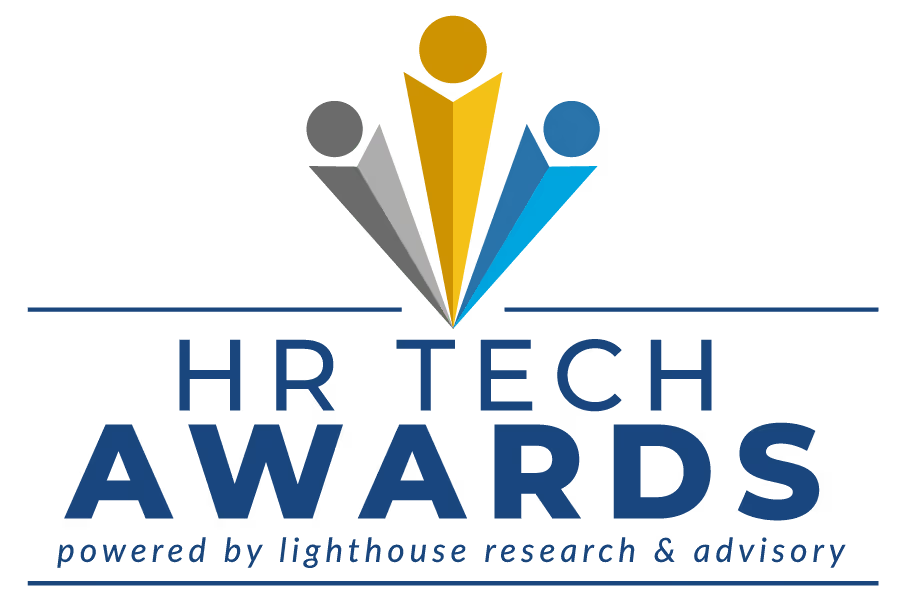
With remote work options becoming the norm and geographic location less and less relevant, many Human Resources teams find themselves with more hiring options than ever before. But are more choices in the candidate pools leading to better hires? When faced with a mountain of applications for a single job posting, recruiters turn to AI-powered recruiting methods of resume scanning for help sifting through the chaff— the software that can be a double-edged sword and leave some of your best hiring options hidden from view. Keep reading to find out how scanners might be hindering rather than helping your HR teams find the best talent and what you can do about it.
Changing face of recruitment: From Manual to Artificial Intelligence
Advancements in technology have forever changed the face of modern recruitment. Traditional manual processes put a considerable strain on resources, and HR teams are under increasing pressure to hire ever more quickly and efficiently. But even with the adoption of recruitment technologies like resume screening software, Glassdoor Economic Research found that it takes an average of 23 days to make one single hire, an increase from previous years. As a result, the recruitment landscape is looking to AI to overcome challenges with manual screening and reduce time-to-hire.
Challenges With Manual Screening
Although deeply entrenched as the "traditional way to hire," manual screening processes are rife with challenges for companies of all sizes.
Some of the most common issues with manual screening and hiring practices include:
Volume
The average response to a single job posting is a staggering 250 applications. Unfortunately, most HR teams simply don't have the bandwidth to carefully consider a candidate pool of that size, especially when filling multiple open positions.
The "Ignore" Problem
With recruiters struggling to sort through so many applications, they often take a "top of the pile" approach—choosing from a small selection of all applications submitted and ignoring the rest. The drawbacks to this approach are obvious, but for time-strapped hiring teams, it's often their only option.
Time and Money
Properly screening resumes requires a considerable investment of time and resources. The options for companies looking for a way to hire faster include: increasing the size of their HR team, calling upon agencies or virtual recruiters for support, or investing in software options that allow for more cost-effective recruitment.
Quality
Recruiters are looking for specific criteria while screening resumes. But because there is so much variation in how people describe their job tasks, recruiters must read between the lines to identify both the hard and soft skills required for success in a role.
Consistency
Recruiters are only human, and it is simply impossible for a human being to scan every resume in the same manner. Stress, workload, mood, number of distractions, and even time of day can influence how a recruiter responds to an application.
Objectivity
The recruiter may intentionally or subconsciously discriminate among candidates based on gender, social standing, race, educational background, interests, and a host of other factors. This unconscious bias often leads to the problem of ‘hidden workers’. Workers who are well equipped to work for your organization but unfortunately do not get a fair chance due to the hiring process.
Resume scanning software was designed to help recruiters overcome these challenges—giving them the means to sort through a high volume of applications quickly and efficiently by focusing on the keywords that point to the skills and experience they’re looking for.
What is an automated AI resume scanning software?
A part of your Applicant Tracking System (ATS), resume scanning software is a tool designed to search for a set list of job-specific keywords. It eliminates some of the manual work involved in screening hundreds of resumes by automating the initial phase of the screening process. It works by matching the keywords listed in the job requirements with the qualifications listed on a candidate's resume or application form, dismissing any applications lacking these keywords. Screening software scans a candidate's:
- Work Experience
- Education
- Hard Skills and Knowledge
- Competencies
Once reserved for large corporations, resume screening tools are now used by businesses of all sizes and on many popular job sites.
There are several advantages of using a resume screening tool, including:

Saves Time
Your HR team can quickly sort through hundreds of applications and focus their time only on the top contenders they wish to personally contact.

Improves Efficiency
By reducing some manual work, HR teams can operate more efficiently and reduce the cost to hire.

Increases Hiring Speed And Volume
With the added speed and efficiency gained by using AI, you can more easily hire for seasonal needs or in other high volume hiring situations without increasing the size of the HR team.
Drawbacks of using an automated Artificial Intelligence resume scanning software
The drawbacks of relying solely on resume scanning software to find candidates deserve careful consideration. Below are a few of the issues we've seen come up when allowing resume scanning software to drive hiring decisions:
False positives and negatives
A false positive occurs when the software selects a candidate with the right keywords on their resume but lacks the fundamental on-the-job skills needed to excel. A false negative occurs when the opposite is true, a candidate with the soft skills and experience required to excel in the position gets ruled out by the system’s filters.
Rejection of viable candidates leads to hidden workers
You may have hundreds of applicants to choose from, but many viable candidates are left out of the mix because of keyword mismatches and formatting issues, and other red flags identified by the system. Thus, candidates who are willing and able to work may get eliminated from the hiring process because of structural problems within the resume scanning framework. These hidden workers may be precisely who you're looking for, but the AI has removed them from the running before you even get a chance to review their application.
The new normal
According to an article in The Verge, resume scanning software options "are used by 75 percent of US employers (rising to 99 percent of Fortune 500 companies)...Technology has made it easier for people to apply for jobs, but also easier for companies to reject them." Like the solutions offered by HiringBranch, modern assessment tools can more accurately determine fit without sacrificing viable candidates.
Overly simplistic criteria
A scanning software relies on overly simplistic criteria to distinguish good and bad applications. It can result in a rejection if it doesn't find specific keywords or spots a gap in employment that may be perfectly justifiable. These "red flags” are reasons for elimination but have no real bearing on a candidate's suitability for the role.
Easily manipulated
Because the AI is looking for certain keywords, it is easy for candidates to determine those keywords by analyzing the job ad and then stuffing their resume with those words to get past the bots. Unfortunately, this often results in a false positive, as discussed above.
Low-quality hires
A faster sorting process doesn't necessarily mean you're getting better-quality candidates. On the contrary, with so many applicants hidden from view, you may be missing out on candidates with the skills to perform well and find yourself stuck dealing with lower-quality hires.
Faster isn't necessarily better, and in the end, what hiring teams are looking for is a good quality candidate with the skills needed to excel in the position they're applying for and the right set of traits to make them a good fit with the company culture.

Most of the top results for “resume scanner” on Google are written to explain how to game the system.
Reliance on an automated Artificial Intelligence resume scanning software in the hiring process
Relying solely on AI scanning software creates a vicious cycle in your hiring process. Because digital tools have made it easier for job seekers to apply to multiple jobs in less time, there has been a dramatic rise in the number of applications each job posting receives. Companies respond to this by using a myriad of filters in their automated system to sort through candidates quickly, with the goal of presenting only the candidates deemed worthy of a human review for the HR team. The same Verge article we mentioned above states, "in the early 2010s, the average corporate job posting attracted 120 applicants...but by the end of the decade, this figure had risen to 250 applicants per job." The increased volume of applicants has prompted many hiring managers to use "brutally rigid filters in their automated filtering software." These brutally rigid filters use a narrow scope of terms on the "must-have" list and don't allow for deeper insight into the candidate's potential for excellence. The rigidity of this method also overlooks the richness and subjective use of language, making it unlikely that even the most qualified candidate will use every keyword the AI was programmed to identify. And so, hundreds of viable candidates get removed from the selection process through no fault of their own.
The Verge also indicates that "the global recruitment technology market had grown to $1.75 billion by 2017 and is expected to nearly double, to $3.1 billion, by 2025." Yet, despite this noticeable increase in investment, AI resume-scanning software still fails to recommend good candidates. As executives begin to realize that they are rejecting viable candidates, the search for alternatives is growing.
An alternative approach with Artificial Intelligence
Another approach to AI-powered recruiting technology with a significant methodological distinction allows for a more well-rounded and human approach to hiring.
By using automated communication assessments administered at the application or pre-hire stage, you can assess candidates on the fundamental skills they will bring to the job, rather than merely on their ability to serve up appropriate keywords.
With this method, you can accurately and consistently measure potential job performance using a broad range of communication parameters to define whether a candidate replied well to a specific question on a pre-hire assessment. Pre-hire assessment results are comprised of multiple parameters defined by hiring managers—so a candidate won’t be completely ruled out if they scored well on all parameters except one. The hiring manager can then look at candidate scores and make their own hiring decision based on the most important parameters.
Pre-hire assessments can also help hiring managers identify candidates with skill gaps that are trainable, keeping viable candidates with obvious potential in the running for a job offer where a resume scanner would have ruled them out completely.

Pre-hire assessments offer a superior alternative to both manual hiring and over-reliance on resume scanning software. Pre-hire assessments offer hiring managers several benefits; the top five is the ability to:
- Find quality candidates that have the skills needed to succeed in the role
- Hire the right fit from the start to reduce turnover rates
- Scale-up hiring to meet peak demands as needed
- Focus on hiring for a solid foundation of soft skills, using on-the-job training to address any skill gaps
- Decrease the resources needed to facilitate the screening process
The role of AI is to aid in the recruiting process, not detract from it. By focusing on candidate assessment rather than scanning for rigidly defined keywords, you can use AI to identify quality candidates that will perform well on the job rather than excluding them from the workforce.
Hiring candidates who have the skills and experience needed to provide the correct answers to your customers while keeping them happy is the key to customer service excellence. Excellent customer service has become one of the biggest drivers of success and the key differentiator in the post-pandemic world. Using pre-hire assessments gives you the speed and efficiency of AI-powered hiring, with the human touch of a manual process so that you can make better hiring decisions faster.

.png)




































.jpg)

.jpg)



























.jpg)




.png)



































.webp)





.svg)